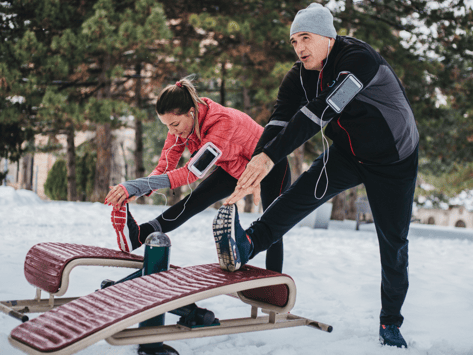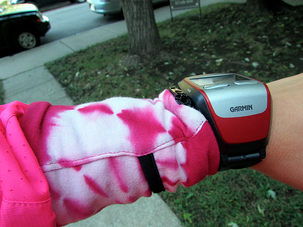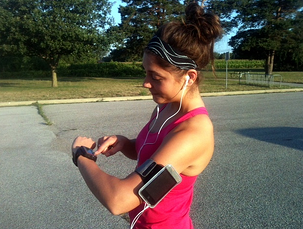It’s summertime which is usually synonymous with vacations and miles of traveling. Summertime travels have been some of the best times of my life! The weather is great, there are so many things to do, the sun is out, and it’s time to relax and have some well-deserved FUN.
But it can be somewhat difficult to continue your regimen while on the road. Hotel gyms are not always the best (although most will get the job done in a crunch), you are staying in a rented home or cottage that does not include a fitness facility, and day passes to the local gym can play havoc with your vacation budget. If you are anything like me, you want do something quick but effective so you can get back to what the trip was intended for: RELAXING. So what are you to do?
Planning to stay active during your travels doesn’t have to be a huge challenge. To help you plan to stay on track in your fitness, no matter the environment, I put together a list of great tools that travel really well. So when you are packing all the clothes you probably will never wear (I am the worst about that) and your sunscreen, leave a little extra room for a few of these great tools that stow easily and will keep you moving toward your desired outcomes.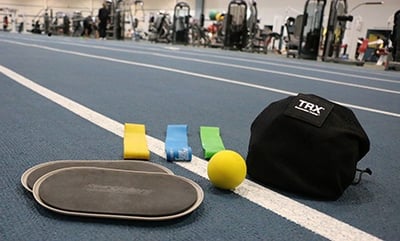
TRX
There is a reason the company that manufactures the very popular TRX is named Fitness Anywhere. The TRX can go and be used anywhere. From hanging the suspension trainer off your hotel door, to getting outside and securing it to a tree, the TRX is ready to go in a matter of seconds. The TRX is really your travel gym because most resisted movements you can think of that you perform in the gym can be done using the TRX. Not sold yet? The TRX rolls up into a super-small bag that won’t take up much room in your luggage or even your carry-on.
Resistance Band
Just like the TRX, the resistance band will add load to any movement and will take up no space in your bag. The band also provides many unique movements as well as tension throughout the entire range of motion. This equals big resistance in a small package.
Tennis/Lacrosse Ball
You have heard me speak about recovery many times before as being a huge part of your training program. A great time to spend some time recovering is when you are on vacation. Pack a tennis or lacrosse ball, or even a small foam roller to take care of your soft tissue rehab needs. Remember, the results from your program happen during recovery, so use this time to reap the benefits.
Val Slides
Also known as furniture movers, Val Slides are a great tool to add a little more oomph to your body weight exercise. With hundreds of ways to utilize these sliders to create a major metabolic and strength effect, they are a great choice to throw in your luggage. By the way, they weigh only a few ounces and are super flat, ensuring that they won’t send your suitcase over the weight limit.
Kettlebell
The kettlebell travels best if you are driving to your destination, not flying. But if you are choosing the automobile route for your vacation, the bell will fit very nicely in the trunk. I can’t even start to cover the multitude of movements that can be accomplished with the kettlebell. For those of you participating in Small Group Training or our HIT program, you’ve witnessed what a single kettlebell workout can look and feel like. The kettlebell is a very effective, very quick, and very easy tool to travel with. Grab one and throw it in the car—you will thank me for it!
These lists of workout tools is by no means exhaustive, but are the ones that I think provide the most impact while taking up the least amount of space. There is a tool I didn’t mention above, but can be the best tool of all and that is a pair of walking shoes. No matter the place, time, and who you are with, you can always go for a stroll. Enjoy your summer. You’ve worked all winter for it.
This blog was written by Tony Maloney, Health Fitness Specialist and Fitness Center Manager. To find out more about the NIFS bloggers, click here.


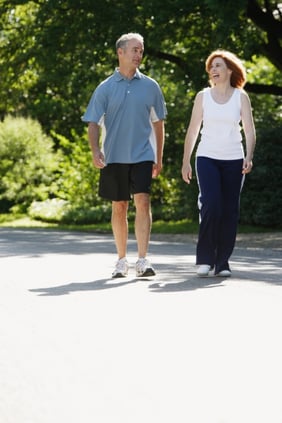 Cardio, short for cardiovascular exercise, has been around for a while—really, since the beginning of time, if you think about what cardio is and what it does for our bodies. In essence, we are doing cardio all the time, just at various intensities (if we weren’t, we would not be reading this!). The primitive man did cardio to stay alive, the
Cardio, short for cardiovascular exercise, has been around for a while—really, since the beginning of time, if you think about what cardio is and what it does for our bodies. In essence, we are doing cardio all the time, just at various intensities (if we weren’t, we would not be reading this!). The primitive man did cardio to stay alive, the 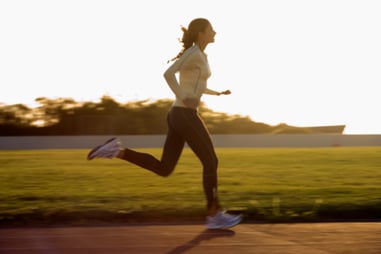 Rome wasn’t built in a day, and neither is a physically fit and healthy body. The great city was built as the result of the culmination of years and years of hard work. From streets to buildings, each single brick or stone was set with a vision in mind to create the best city in the world. I’m sure many mistakes were made throughout the process; however, those mistakes were only microscopic setbacks in the overall plan.
Rome wasn’t built in a day, and neither is a physically fit and healthy body. The great city was built as the result of the culmination of years and years of hard work. From streets to buildings, each single brick or stone was set with a vision in mind to create the best city in the world. I’m sure many mistakes were made throughout the process; however, those mistakes were only microscopic setbacks in the overall plan. Even though it’s been a few years since I graduated, it still feels like I was just walking through campus and living in the dorm. I absolutely loved college, and while many people gained the
Even though it’s been a few years since I graduated, it still feels like I was just walking through campus and living in the dorm. I absolutely loved college, and while many people gained the  Wearable fitness technology
Wearable fitness technology
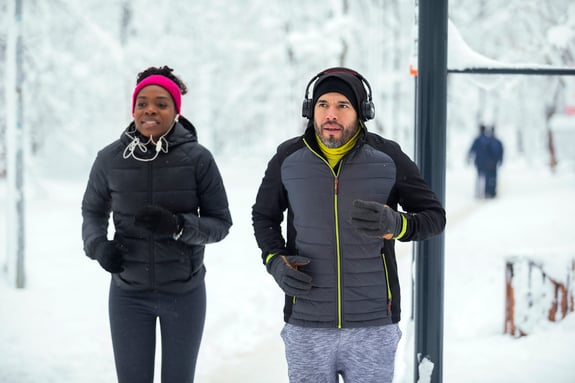
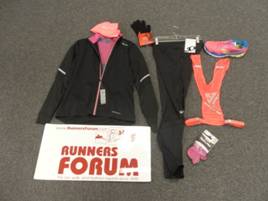
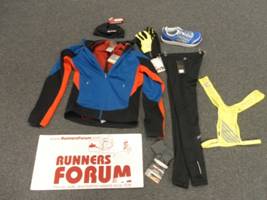
 If you are like the majority of Americans, your work is strongly reliant on the use of computers, smartphones, webinars, and other electronic devices and digital technology. Along with this, the use of social media, text messaging, and email to interact with our friends and family is also at an all-time high—not to mention the number of hours spent in front of a television. With the combination of these things, the need to unplug from our technology has never been greater.
If you are like the majority of Americans, your work is strongly reliant on the use of computers, smartphones, webinars, and other electronic devices and digital technology. Along with this, the use of social media, text messaging, and email to interact with our friends and family is also at an all-time high—not to mention the number of hours spent in front of a television. With the combination of these things, the need to unplug from our technology has never been greater. If you are a solo runner or walker, it is likely because you enjoy having that outlet in your day to just be with your thoughts, relieve stress and clear your head. This is a great way to accomplish all of these things, but if you are looking to make some greater strides in your race efforts this year, you may want to consider adding in a few training sessions each week with other people. This will allow you to step out of your comfort zone and push yourself harder than you would when you are training on your own. Along with this, there are many additional benefits that can be accomplished when training with a group. So why should you consider training with others?
If you are a solo runner or walker, it is likely because you enjoy having that outlet in your day to just be with your thoughts, relieve stress and clear your head. This is a great way to accomplish all of these things, but if you are looking to make some greater strides in your race efforts this year, you may want to consider adding in a few training sessions each week with other people. This will allow you to step out of your comfort zone and push yourself harder than you would when you are training on your own. Along with this, there are many additional benefits that can be accomplished when training with a group. So why should you consider training with others?